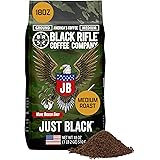Have you ever craved a delicious, café-quality cappuccino but felt limited without an expensive espresso machine? The good news is, crafting a rich, velvety cappuccino at home without an espresso machine is entirely achievable. This article expands upon the techniques demonstrated in the video above, offering a comprehensive guide to mastering your homemade milky coffee beverages.
Embarking on this journey to create your own homemade cappuccino allows for both cost savings and the satisfaction of a perfect brew. With a few accessible tools and precise steps, you can elevate your daily coffee ritual. This detailed walkthrough will equip you with the knowledge to make not only cappuccinos but also lattes and flat whites, rivaling your favorite coffee shop.
The Core Principles of Crafting Home Cappuccino
Regardless of your chosen equipment, the process of making cappuccino at home without an espresso machine can be broken down into three fundamental stages. Firstly, you must create a short, strong coffee base, which provides the essential foundation for any milk-based drink. Secondly, the milk requires heating and precise frothing to achieve that desirable silky texture.
Finally, the careful pouring of this frothed milk into your coffee base integrates all the elements into a harmonious and flavorful cup. While an espresso machine streamlines these steps, manual methods, as detailed below, yield equally exceptional results. Furthermore, the hands-on approach often brings a deeper appreciation for the brewing process.
Step 1: Forging the Robust Coffee Base
The cornerstone of an outstanding cappuccino is a potent and concentrated coffee base. This strong brew is crucial for cutting through the richness of the milk, ensuring the coffee’s flavor remains prominent and balanced. Without this intensity, the final drink can taste diluted and lack character.
For many home baristas, the Moka pot is an ideal choice for this task, being a common and versatile brewing device. Its ability to produce a concentrated coffee, akin to espresso in its intensity, makes it perfect for milk-based beverages. While the video demonstrates the Moka pot, other methods like the AeroPress or a carefully prepared French press can also yield a suitable strong coffee base.
Moka Pot Mastery for a Strong Base
Achieving a robust coffee extract with a Moka pot involves meticulous attention to a few key details. Begin by filling the Moka pot’s bottom chamber with preheated water, ensuring it sits just below the pressure valve. Preheating minimizes the time the coffee grounds are exposed to heat, which prevents scorching and bitter flavors.
Subsequently, fill the coffee basket with freshly ground espresso roast beans. The video specified using 17 grams of coffee for a three-cup Moka pot, typically yielding enough for two cappuccinos. The grind setting is equally critical; a fine grind, such as 13 clicks on a Comandante C40 grinder, is recommended to facilitate proper extraction and achieve desired strength.
Carefully screw the upper chamber tightly onto the base, using a towel if the base is hot. Place the Moka pot on a heat source and patiently wait. As the coffee begins to flow into the upper chamber, observe the stream. The initial 70 to 80 grams of extraction are the most concentrated and flavorful, providing an excellent base. Halting the extraction slightly earlier can further enhance its suitability for milk, even if this specific extraction is less balanced for drinking black.
Refining Your Coffee for Milk Integration
Even if you regularly use a Moka pot, a small adjustment can optimize your coffee for mixing with milk. Consider grinding your coffee slightly finer than usual or, if using pre-ground coffee, adding a little more to the basket. These subtle modifications increase the extraction efficiency, resulting in a more intense concentrate.
Stopping the extraction a little earlier, before the coffee becomes too light or starts to “blond,” is also beneficial. This ensures you capture only the richest, most flavorful compounds, which will stand up beautifully to the milk. Such techniques, often shared by experienced baristas, significantly enhance the final taste profile of your homemade cappuccino.
Step 2: The Art of Heating and Frothing Milk
After preparing your coffee base, the next crucial step is perfecting the milk component. The quality of your frothed milk directly impacts the texture and sweetness of your cappuccino. Achieving that coveted silky, microfoam texture transforms an ordinary drink into a café-worthy experience.
Milk Selection Matters
The type of milk you choose significantly influences frothing success and taste. For optimal results, select full-fat dairy milk or a barista-specific plant-based alternative. Full-fat milk contains a higher concentration of proteins and fats, which are essential for creating stable, luscious foam. These components help trap air effectively and contribute to a creamy mouthfeel.
Barista-blend plant-based milks are specifically formulated to mimic the frothing properties of dairy milk, offering excellent stability and texture for those preferring non-dairy options. Regular plant milks, however, may not froth as consistently due to varying protein and fat content. Experimenting with different brands can help you discover what works best for your preferences.
Temperature Precision for Optimal Sweetness
Controlling the milk’s temperature is paramount for both frothing efficacy and flavor. The ideal target temperature for frothed milk is between 60 to 70 degrees Celsius (140-158 degrees Fahrenheit). Heating milk beyond this range can scald it, leading to an unpleasant, burnt flavor and a degraded texture.
Conversely, underheating results in underdeveloped foam and a lack of inherent sweetness. Using a simple kitchen thermometer is highly recommended to monitor the temperature accurately. This precision ensures the milk retains its natural sweetness and integrates perfectly with your strong coffee base.
Essential Tools for Frothing
While the video demonstrates frothing directly in a French press or using a handheld device, a milk pitcher proves invaluable for control and consistency. These pitchers, often available for under 10 euros, feature a spout designed for pouring, which is essential for uniform mixing and even attempting latte art. Their metallic construction also aids in rapid heat distribution and cooling when necessary.
Heating the milk is easily accomplished in a microwave. For a cup of approximately 200 milliliters, 150 milliliters of milk typically requires 45 to 60 seconds. However, this varies based on your microwave’s wattage and initial milk temperature, necessitating calibration with your thermometer. Once heated, the milk is ready for frothing.
Frothing Methods Explained
Two popular manual frothing techniques offer excellent results without an espresso machine: the French press and the handheld frother. Both require a little practice, but the rewards are well worth the effort.
The French Press Frothing Technique
To froth milk using a French press, heat your desired amount of milk (e.g., 150ml for a 200ml cup) directly in the French press vessel, after removing the plunger. Once heated to 60-70°C, reinsert the plunger and begin pumping. Initially, pump from top to bottom a few times, keeping the plunger near the surface to incorporate air. This quickly increases the milk’s volume and creates foam.
Aim to approximately double the milk’s volume during this initial aeration phase, which might only take 3-5 presses. Subsequently, submerge the plunger fully into the milk and continue pressing with the milk mass. This action doesn’t create additional foam but rather folds the existing foam into the milk, developing a smooth, silky texture known as microfoam. Typically, 5-10 presses are sufficient for this step, but experimentation is key to finding your preferred consistency.
Once frothed, transfer the milk to a pitcher if you haven’t used one already. Swirl the milk vigorously and tap the pitcher firmly on a hard surface. This crucial step eliminates any large, unsightly bubbles and helps to integrate the foam seamlessly with the milk, achieving that desirable uniform, velvety texture. Do not hesitate to repeat this swirling and tapping several times.
Mastering the Handheld Frother
If utilizing a handheld frother, it is highly recommended to heat your milk directly in a milk pitcher. This provides superior control and facilitates a better result. Place the tip of the frother just below the milk’s surface, turn it on, and listen for a distinct scratching sound, indicating air is being introduced.
Visually, you should aim to create a vortex in the milk. This process is slower than with a French press, potentially requiring 15-20 seconds or even more for sufficient aeration. Observe the milk’s volume increasing as your primary indicator. Once adequately aerated, submerge the frother further into the milk to mix the created foam with the liquid milk for a few more seconds, refining the texture.
As with the French press method, swirling the milk and tapping the pitcher multiple times on a hard surface is critical before pouring. This action helps to disperse any larger bubbles and ensures a consistent, smooth texture throughout the milk, which is essential for a high-quality cappuccino. Advanced handheld frothers, like the Nanofoamer, are designed with technical improvements that can yield superior microfoam results.
Step 3: The Pour – Uniting Coffee and Milk
With your strong coffee base and perfectly frothed milk ready, the final step is the pour. While latte art adds a beautiful visual dimension to your drink, remember that a delicious taste and velvety texture are the true hallmarks of an excellent cappuccino. A visually appealing drink is a wonderful bonus, but not a prerequisite for enjoyment.
Basic Pouring Principles
The act of pouring milk into coffee involves two primary stages to achieve both proper mixing and a pleasant appearance. Initially, pour the frothed milk into the cup from a greater distance. This allows the milk to dive beneath the coffee’s surface, thoroughly integrating the two liquids and creating a rich, brown canvas. If desired, a spoon can be used to gently stir the initial mix, ensuring homogeneity.
Subsequently, as the cup fills and you wish to introduce the foam for texture or a design, lower the pitcher closer to the cup’s rim. At this point, the foam, rather than the liquid milk, will float on top, allowing for precise placement. This technique ensures a balanced flavor profile, preventing a separation of coffee and milk.
The “Chasing Hearts” Latte Art Cheat
For those who admire latte art but find traditional free-pour designs challenging, the “Chasing Hearts” cheat offers an elegant solution. Begin by pouring your frothed milk into the coffee from a distance, just as described above. The goal is to maintain a consistent brown layer on top, creating a smooth, dark surface.
Then, pause your pour. Using a spoon, carefully scoop small drops of the remaining milk foam and gently place them onto the brown coffee surface in a pattern you desire. Finally, grab a thin, pointy object – a toothpick or a clean thermometer works perfectly – and drag it through the center of each foam dot. This simple motion transforms the dots into charming little hearts, adding a delightful visual flourish to your homemade cappuccino without the complexity of free-pour latte art. This trick is a fantastic way to impress yourself and others, showcasing a beautiful drink every time.







